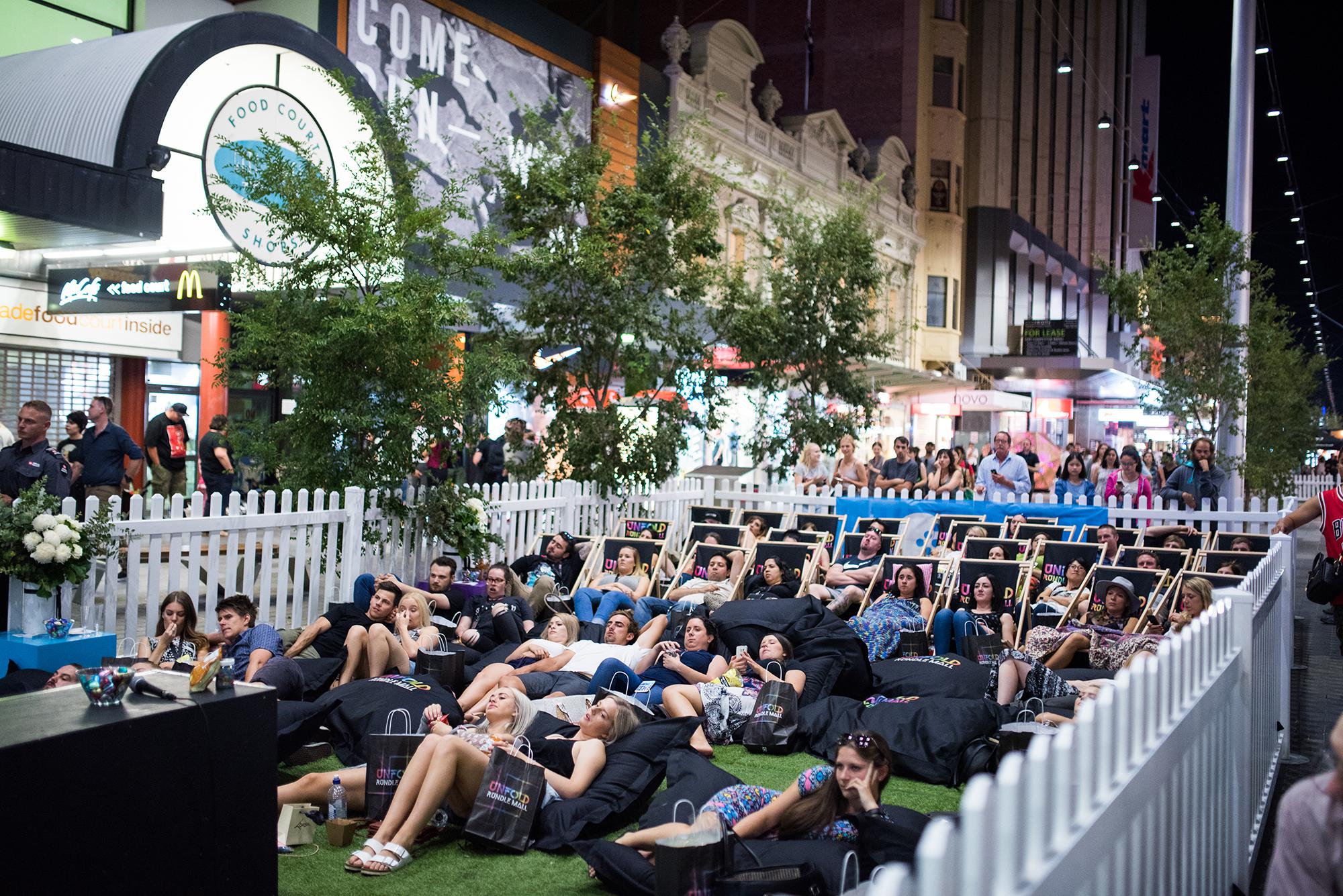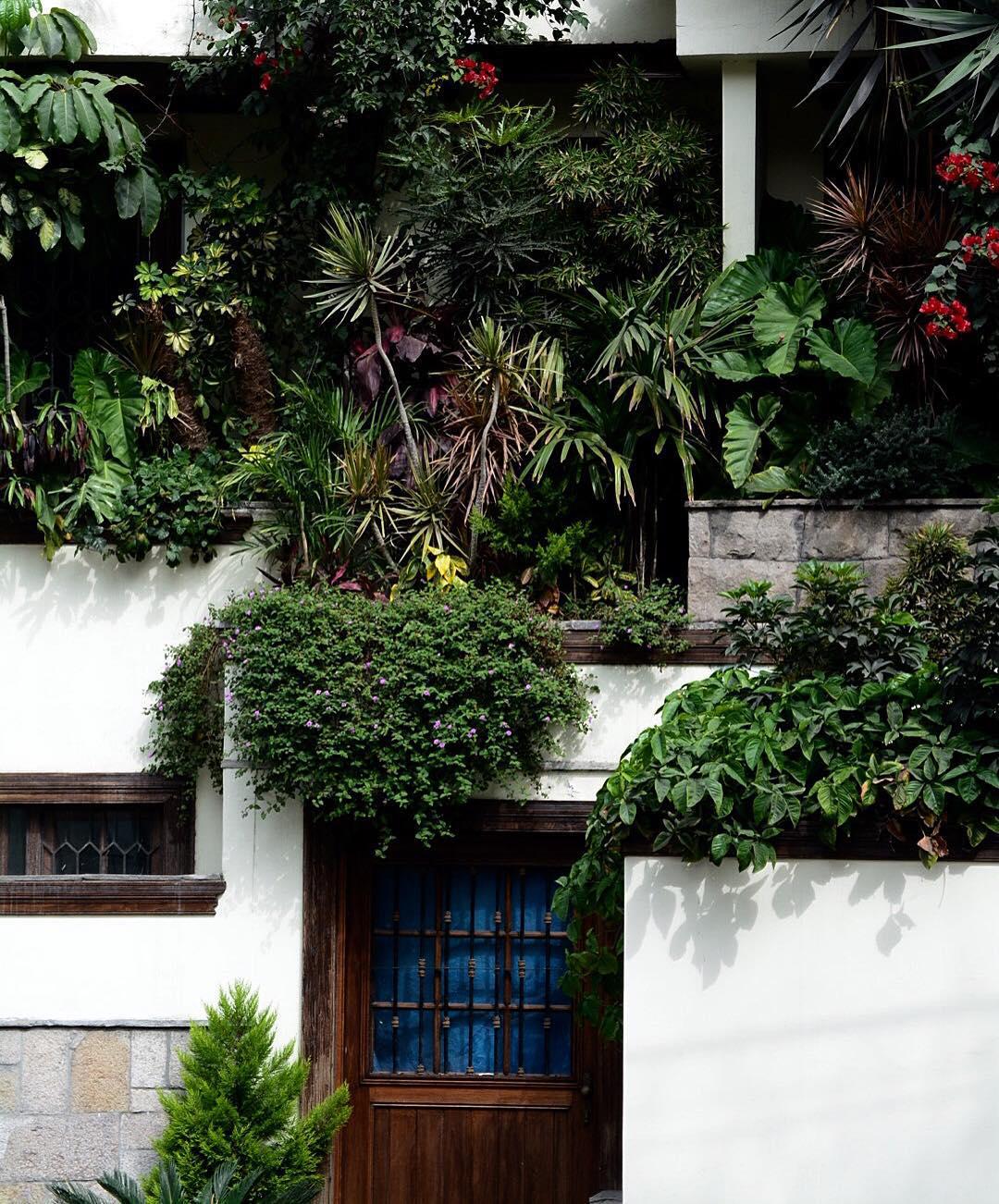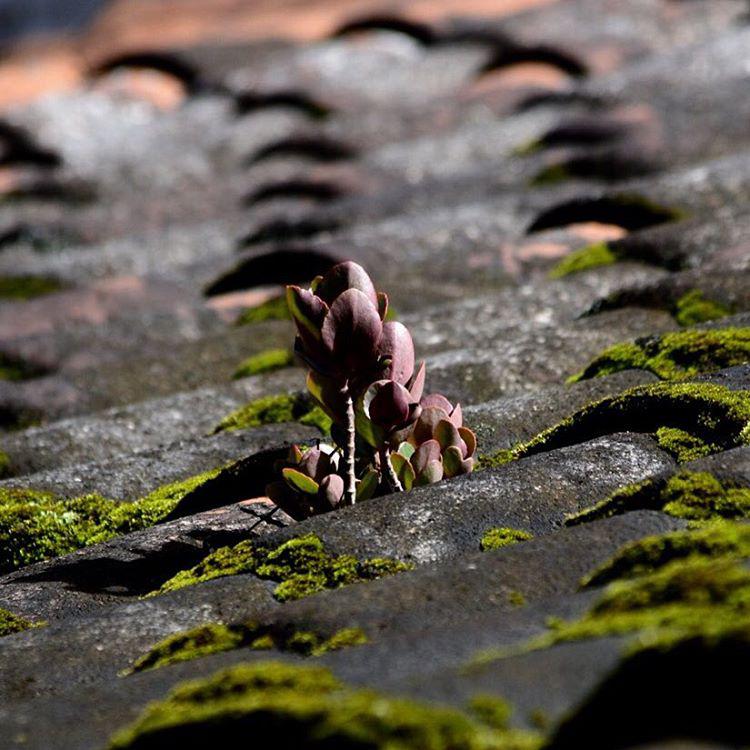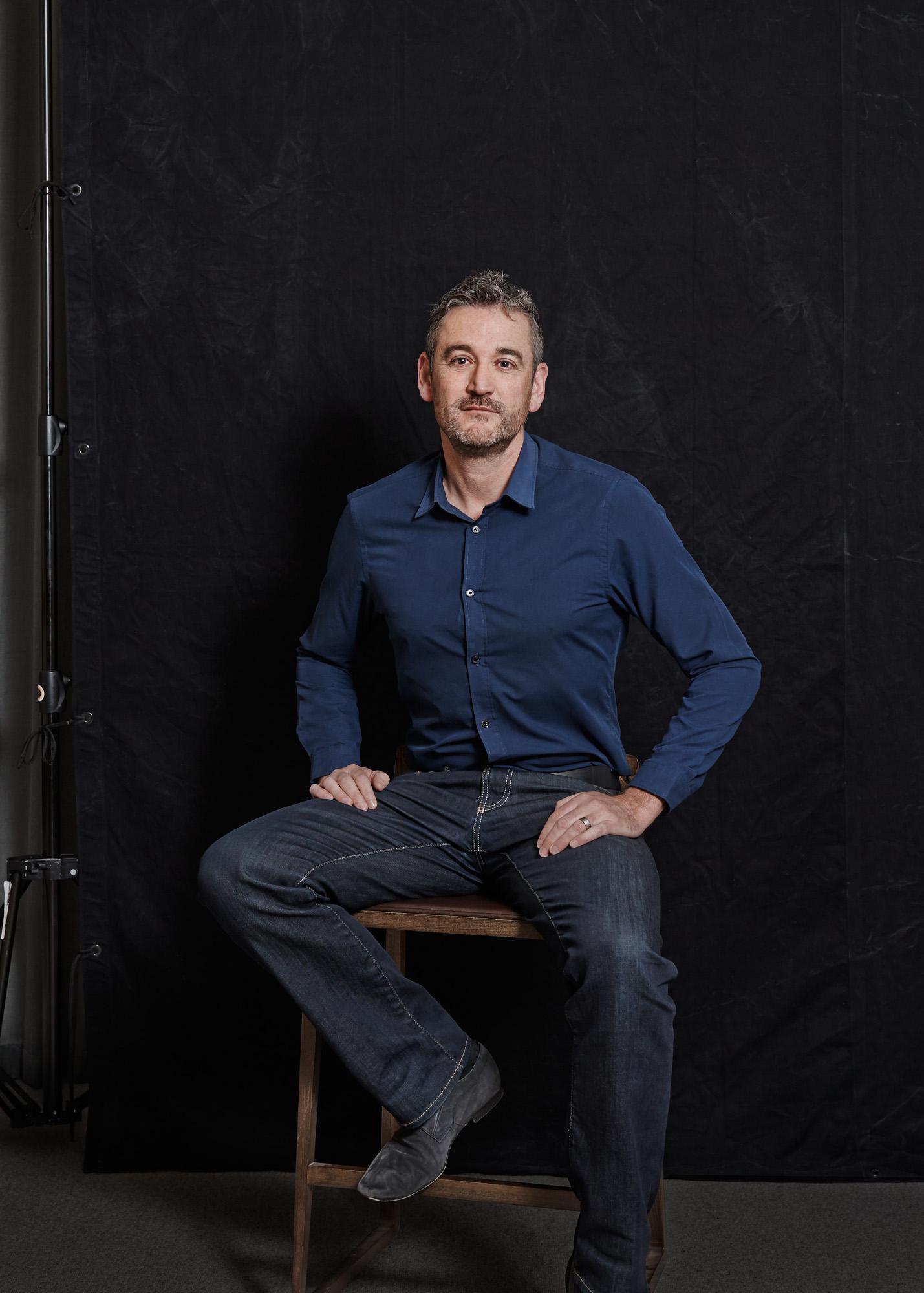By Angus Bruce, HASSELL
Have you ever noticed how much “wildlife” there is in our urban landscape?The small fern creeping out from the crack of a city wall, the copse of tightly interwoven trees running wild adjacent an underpass, or perhaps the mangroves that have invaded the over-engineered concrete channel adjacent the cycle path? Whether it is accidental or deliberate, there is something reaffirming about seeing “wild” nature asserting itself amongst the concrete and bitumen.
It’s part of our DNA to be drawn towards wild and tactile nature. And globally, there is a growing shift to let it creep back in to our cities, to resist the over-programmed, sanitised and manicured public spaces to which we have become accustomed.

Night cinema as part of a wider curated street program for Rundle Mall.
Increasingly, communities are seeking to “reclaim the wild” and embrace the rawness of nature through more organic, tactile and self-sustaining urban realms, where people can choose how they use the space.
The desire is for spaces to be defined but not controlled. There’s a level of “grittiness” that people are willing - even eager - to accept. People don’t need to be corralled and told how and where to sit, stand or play. They want to decide their own experience and be drawn in by how others are interpreting the space.
This reactive movement against enforced order is happening both in our green spaces – our public parks, playgrounds, river fronts - and in our urban and public spaces such as pedestrian malls, laneways and town squares, where we are seeing more moveable furniture, food trucks, graffiti art and pop-up stalls.
So why is this happening? There is a wealth of research over a number of years now showing that exposure to nature – particularly contact with nature, rather than passive viewing – has a positive impact on our mental and physical health. And that is perhaps why a less structured green space is more appealing – it invites tactility and engagement.
There is also better awareness of the importance of nature play and unstructured play for children, a rejection of the nanny state, and the millennial desire to be immersed and participate in authentic experiences.
At a practical level, there is also developer and council demand for sustainable and low maintenance spaces that can “self-regulate” and aren’t so reliant on constant maintenance, artificial irrigation and the like.

Plants enveloping a residential building to create its own organic and wild character.
However, it takes restraint and vision on the part of both developer and designer to include only minimal programming and allow a space to become self-defined by the people who use it – “seeding” the spaces with ideas and potential but holding back on the literal and instructive.
There is undeniable worth in allowing a space to evolve in response to the community that uses it; it creates a subliminal value and encourages return visits as the space suddenly becomes richer because of the multitude of non-directed experiences that can be had.
We know that in Melbourne, it is the laneways that are the attraction and which change – enhance - the value of the adjoining buildings. Last month, the Australian Institute of Landscape Architects transformed Canberra’s sometimes staid thoroughfare, Garema Place, with yarn-bombed trees, pop-up coffee and gelato stands, chalk painted pavement patterns and moveable chairs. The end result was a buzzing square with a dramatically increased “dwell time” for the duration.
While such spaces may not be as heavily programmed as we’ve been accustomed to, the global evidence shows that they can be highly valued and well-used. One of the more interesting examples is the former Templehof airport in Berlin which has been allowed to organically evolve into a 300 hectare public park and events space after its closure as an airport.
Restraint and regeneration of the land is the underlying natural “wild” outcome.

Invasive naturalisation of plants within our urban cities .
From a dis-ordered seating and self programmable use perspective, Bryant Park in New York is a standout. People shift the random collections of public chairs and tables to create clusters and gathering points of scale and intimacy to suit the users. It's not all benches facing outward in a unified and controlled manner.
Shanghai is redeveloping its Huangpu river foreshore to allow its citizens to better experience and enjoy the river edge. With the proposed east bank replanting works, there is a desire to develop an honest urban forest of 2 million trees – one for each of Shanghai’s two million children.
Sydney’s Sustainable Streets initiative through the City of Sydney has allowed "urban farming” on street verges throughout Chippendale, and the new Perth Stadium includes an expansive nature playground, with minimal prescribed equipment and cataloged program, encouraging children to explore through irregular, organic contact with the elements and the environment.
These are all prime cases of how the edges and at times the core of our parks and public spaces are being broken down and how the wild and uncontrolled is bleeding into the design of our city landscapes. They express a demand and expectations from the communities and user groups who “own” these spaces.
There will always be a place for manicured and heavily programmed spaces, but they are not the only answer for an open expanse. This shift to embrace more of the wild is a healthy one, from a human, environmental, health, cost and community use perspective. Be prepared to see – enjoy - more of this in future.

Angus Bruce is the Principal and head of landscape architecture at HASSELL. He has 25 years experience as a landscape architect and horticulturist within designed and constructed landscapes. Specialising in landscape architecture and built environments, his particular focus is on the project overlap between design, environment, art and social needs.













